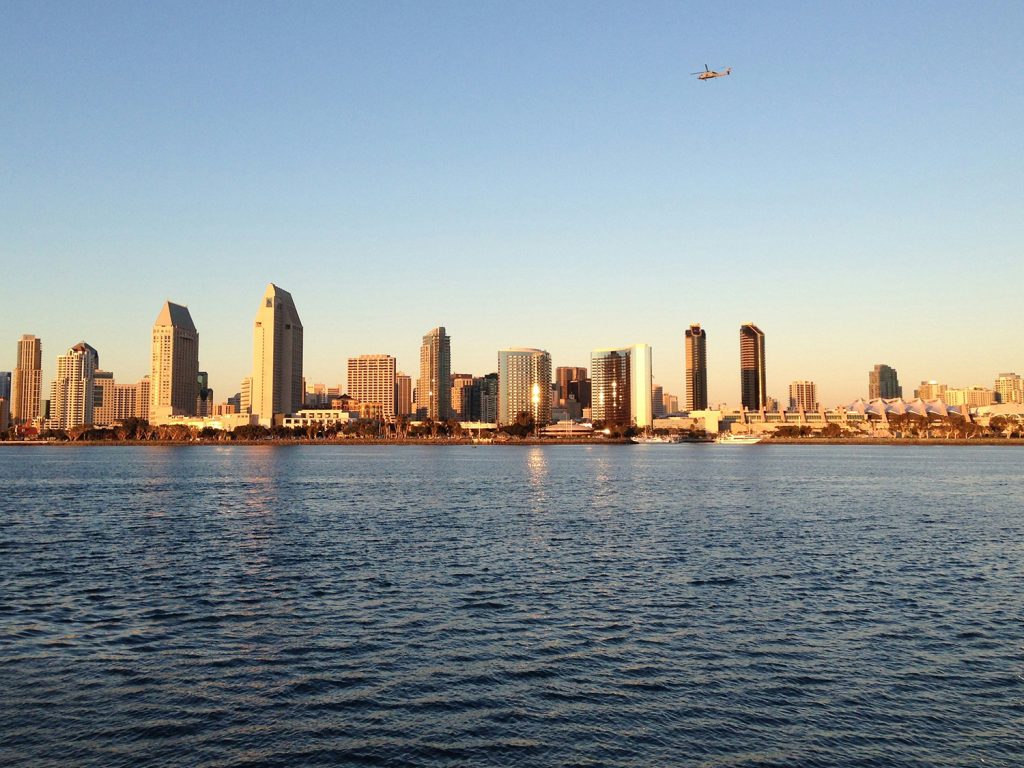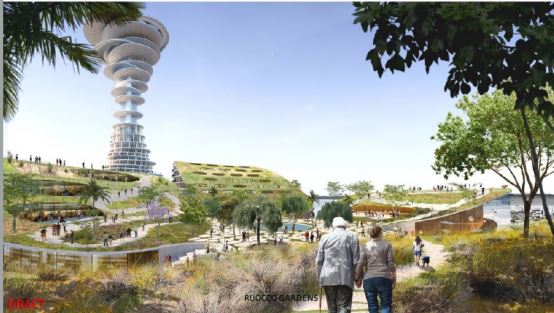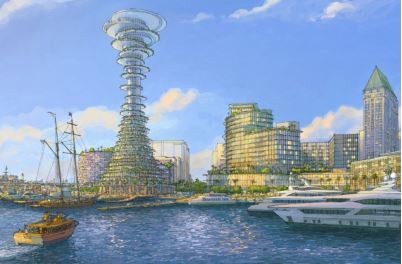
After more than a decade of planning, the Port of San Diego has approved a new master plan that dictates what can – and importantly, what cannot – be built in the thousands of acres surrounding the San Diego Bay.
The plan would allow up to 3,910 more hotel rooms, 20 more acres of public space, and 340,000 square feet of shops and restaurants, mostly located in downtown San Diego.
The plan does not allocate for any additional hotel rooms in Coronado or Silver Strand. It also designates the north end of Grand Caribe Island, the site of the controversial, proposed Cottages at the Cays project, as recreational open space.
That doesn’t mean no hotels will come, but it does mean that, in order to build them, developers would have to seek an amendment to the 30-year Port Master Plan. An amendment would not change any zoning, but rather, would provide an exception for a specific project.
Although approved unanimously by the San Diego Board of Port Commissioners on Feb. 28, it’s not a done deal, yet: The updated plan must now be approved by the California Coastal Commission, a process that could take up to a year.
Determining the port’s future was a laborious, 11-year process with passionate opinions on both sides, some in favor of more development, and others

preferring less. Chief among concerns were maintaining public access to the water, with planning for more parks, boat slips, and an urban beach.
During public comment, Coronado officials addressed the board to express gratitude for the hundreds of meetings and extensive community outreach that yielded the final version of the plan, which does not increase hotel rooms in Coronado or Silver Strand, and for the plan’s included recreational open space.
“We appreciate you maintaining the current number of hotel rooms,” said Coronado City Councilmember Mike Donovan. “The designation of the north end of Grand Caribe Isle to recreational open space will make that open space for the entire county to be able to visit and put their feet in the water and enjoy this park.”
Coronado City Councilmember Carrie Downey noted that port staff held hundreds of meetings on the matter, including some in Coronado which “were not always fun” due to the community’s strong opinions on its future.
“I commend, I congratulate and I applaud the efforts.” Downey said. “Your staff has gone above and beyond in listening to the community.”
The two were joined by Coronado City Manager Tina Friend, who echoed their sentiments.
“It takes a lot of hard work and incredible staff dedication to move through the process to hear everyone authentically and to come up with what I think is a very balanced plan,” Friend said.

The plan notes that the North Grand Caribe Isle subdistrict is under a long-term lease to Keith Mishkin, who proposed the Cottages at the Cays project.
This updated policy does not preclude Mishkin from moving forward with the project, but he will need to conduct an environmental impact review and then seek an amendment to the port master plan in order to do so. The same was true in February 2023, when the commission in a split vote allowed the proposed project to move forward.
“The port has advised Mr. Mishkin that if he wanted to pursue this, he would need to submit an EIR and go through the process of requesting an amendment,” Downey said in a phone interview. “It’s not inconceivable that this could move forward, but it would take a lot of work.”
Although Coronado’s representatives at the port’s meeting last week were pleased with the new master plan, not everyone agreed.
During lengthy public comment, many people spoke against the plan, and in particular, the amount of development it allows in the Embarcadero district. The plan allows up to 750 more hotel rooms in the area.
“I understand why Coronado loves this plan, you’re not doing this to them, you’re doing this to the Embarcadero,” said Janet Rogers, co-chair of the Embarcadero Coalition, as she addressed the commission wearing blue to symbolize the San Diego Bay.
She and others worried that more density would block bay views and strain infrastructure. Still, Rogers and others remained appreciative of the years of work and meetings it took to develop the plan.





